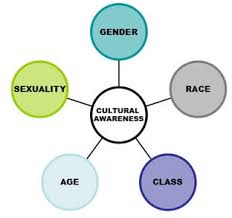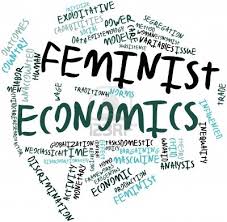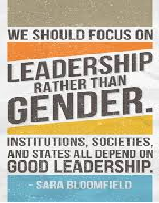
Multicultural Education on Gender & Development
Reading 1: https://www.pmi.org/about/learn-about-pmi/what-is-project-management
Reading 2: https://www.nolo.com/legal-encyclopedia/nonprofit-fundraising-methods-overview-29619.html
Video 1: https://www.youtube.com/watch?v=dpDCHZtT3Z4
Video 2: https://www.youtube.com/watch?v=VwIWfvW3SD8
VIdeo 3: https://www.youtube.com/watch?v=-IXCtYtkb7s
Please follows rules that on the example I posted.
You need to write 8 reading points and how you think and learned about the point
next, write the personal experience about the topic reading. And what you learned from the video
Next, questions of why and how. Then answers can be found in the reading.
next, answer them and how you think with your friend.
Last, write about what the readings and video talked about, and talk about what you learned.
Reading Reflection
Week: 2
Key Points:
1. Earliest innovations have allowed humans to share knowledge and relate them to some of
the great technological innovations now. Those basic innovations have yet to have any
major breakthroughs, the ones that we rely on the most especially. When it comes to
leaders in innovations the United States is always thought of, which is true, yet this
country is lacking some upgrades in important and failing social systems. Most of the
great new innovations we see today are not at all government and team run, but invented
by determined entrepreneurs (Jonson and Jonson, p.9, 2015).
2. Competency plays a really important role in the survival and profitability of a business.
There is core competence which is a main focus of the company in order to “survive and
thrive,” and just the main concept of the business. Then there is distinctive competence
which is something that makes your business or company unique and better than
competitors. And individual competencies are the combination of learnable skills and
natural ability that allows someone to accomplish a specific goal or dream. Lastly,
collective competencies are the mixing of people with different individual competencies
within a team in order to be high functioning and successful. Then there are also the
competencies that need to be proven to the public, such as the ability to practice as a
lawyer or a surgeon (Jonson and Jonson, p.11, 2015).
3. Resilience is a part of finding your life purpose, striving for improvement and realistic
world views. Confronting the brutal facts, improvising and looking for the reason
something happened will always push a business owner forward in their progress (Jonson
and Jonson, 2015).
4. Businesses should define themselves as their “core competence,” or main abilities, rather
than the goods or services they provide. If they can identify their core competence, then
they can know what they need to do in order to rise above the competition. Three tests in
order to identify what a brands core competence is are knowing that a core competence
applies to a wide market, deliver a good perceived end product and should be difficult for
competitors to imitate (Jonson and Jonson, 2015).
5. Competition is very important for business success. Over the last decade, the U.S. came
in nearly last for amount of progress made out of 44 countries. Innovation and
entrepreneurship needs to increase in order to increase competition. It is worried that the
U.S. is on a decline for innovative potential. Creativity and education needs to be
increased especially in order to bring young people back into the entrepreneurship and
innovation scene, which will in turn, create competition (Jonson and Jonson, p.12, 2015).
6. Japan’s innovation production and bold pioneering entrepreneurial companies have
declined greatly. There are very little initiatives to teach more about entrepreneurships
and startups to Japanese citizens, yet this is changing. They think it could be because it
used to be very expensive to register your new company, yet that has recently changed
and been made much more affordable. Unemployment in Japan is also really low, and
most people get a job as soon as they get out of college. And though that is great in a
way, many great inventions are created when someone has plenty of free time and
discovers a great business idea amidst doing nothing or working with a hobby maybe
(Williams, p. 7, 2016).
7. There are often lots of options in the U.S. for startups in entrepreneurship with help from
their university. This provides young entrepreneurs with funding and investment
opportunities. In Japan, there are not nearly as many resources to get funding though
they are trying to increase the amount of university-funded entrepreneurship help
(Williams, p.8, 2016).
8. Core competencies are collective areas of expertise that the entire team must practice in
order for the business to run according to their purpose and what they stand for. For
example, I work at a chipotle and a Core Competence that we practice every day is
excellent customer service. Distinctive competencies are things or areas that a business
does better or is unique from any other business. One of Chipotle’s Distinctive
Competencies is that food served fast doesn’t have to be a fast food experience. Meaning
that we try to give customers an experience similar to a sit-down restaurant, food that is
of high quality, non-GMO and organic, while also preparing their food quickly. This sets
them apart from other fast food restaurants. (Matthews et al, 2015, p. 11)
Relating the readings with my personal experience:
I often think about how lucky we are as students at such a supportive school such as
UVM, and personally for me, I have supportive and inspiring parents who believe in me. I know
for a fact, that if I really needed funding for some new venture and idea, I could definitely get the
help and loans that I needed from family, our generous and supportive school, and if they could
not help me, I am sure they could refer me to someone who eventually would. I think that the
amount of opportunities we have been given in such a nice school like this is unbelievable and
forgotten, most definitely taken for granted.
Regarding the decline of innovations and startups in Japan, and the lack of education
about entrepreneurship, I do believe though that it would help immensely if they had a required
high school class in entrepreneurship, innovation and resilience (such as this one). I have found
this class to even already to be very inspiring and motivating. It is a period of my day where I
get to really think about what I want to do with my life and what makes me really happy, which
sometimes you forget to think about when you have such a busy schedule. If you are given the
opportunity to think like that and open up your mind to the possibility of starting your own
company or brand, then you will continue to do so. And like we learned in this reading too, it
completely benefits the economy to create and build a business, as it supplies jobs and creates a
new market possibly, but also encourages competition, which will then in turn motivate others to make more innovations. It is a whole circle that should definitely be far more encouraged in
school systems throughout the U.S. as I believe it would create a fair amount of more young
entrepreneurs.
I liked learning the definition of “core competence” as it is a term I have never heard
before. It makes me think of my mom’s business and what its core competence is. She has a law
firm that does elder law and estate planning, so she plans out people’s will and assets and
organizes their legal documents, along with helping with placement for peoples parents in
nursing homes and all the documentation that goes along with that. She offers a service for a
nurse to come to their house and she has her nurse employee be at the office, make house visits
and talk on the phone to her elderly clients in need of assistance with someone compassionate,
understanding and good at dealing with other problems. My mom offers her as someone that
people can call when their parent or loved one dies as she is pretty much a professional at
calming people down while being understanding and telling them what they need to do next
legally without sounding cold. It is a very original idea, and so I believe that is what her
business’s core competence is.
Questions for discussion:
1. Core competency is discussed as being very important, but isn’t it redundant. Why might
someone start up a business if they have no competency?
2. What kind of progress are the other countries making if the US is second to last in
progress over the last decade?
3. One speculated reason for Japan not producing as many fast paced and bold innovations
recently because they are too much of perfectionists. How could you change this concept
in Japanese entrepreneurial culture?
Outcomes of my discussion with my learning partner:
• In discussion we decided that a common theme which was prevalent in all articles was
that resilience is one of the most crucial aspects of creating a successful and profitable
business.
• If you take a look at most of the successful individuals mentioned, all of them had a well
developed ability to improvise when a situation didn’t go as planned. To go deeper, Steve
Jobs’ project NeXT wasn’t actually intended to succeed, however it was developed to
influence Apple to rehire him. He never cared about the OS (Operating System), instead
he aimed to create a well designed product which would spark the interest of companies,
not consumers.
• Surrounding yourself with a good supportive team of individuals in theory can be a good
way to increase your resilience, but in reality, some people can work better without
“noise” surrounding them (i.e. those with strong vision or passion, Steve Jobs.)
• Informed risk taking v.s. Blatant risk taking – it is dangerous to assume that risk taking in
general is a good business practice, however, sometimes it is important to be able to
throw all your chips in, and make a big move, to move ahead, where others wouldn’t be
as brave to do so. It is important to calculate the risk v.s. Reward ration and then make a
decision next.
Synthesis:
The overall learnings of these readings and discussion was mainly about competition and
how that makes the market thrive, the encouragement needed in order to make more
entrepreneurs and how that also makes the economy thrive, and the importance of knowing and
having different “competences” in your business in order for it to do well. You want your
business to not just survive, but also to thrive, so you need to identify what sets you apart from
other alike businesses. Throughout these readings, I learned and read about some very thought provoking
and eye-opening topics, and it especially got me thinking how the U.S. should offer
high school entrepreneurship and innovation classes in order to stimulate and excite young
potential entrepreneurs.
We can write this or a similar paper for you! Simply fill the order form!












